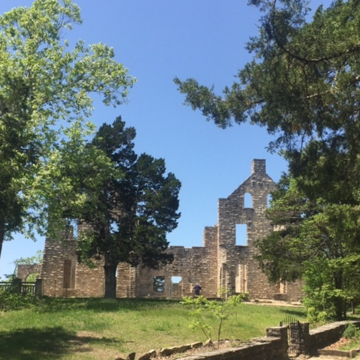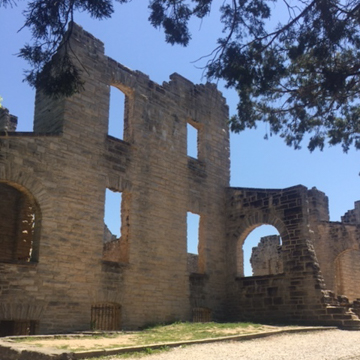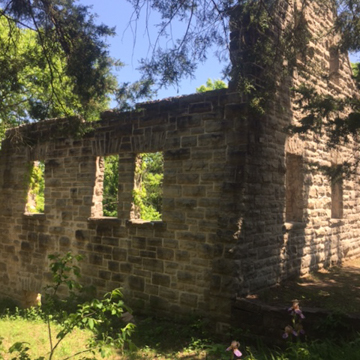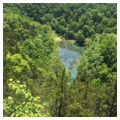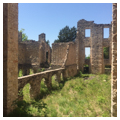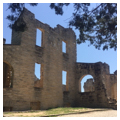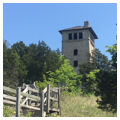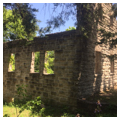Ha Ha Tonka, or "laughing waters" according to early accounts, is important for its landscape and its architectural legacy, and preeminent due to its remarkable number of "natural curiosities." Within these 3,600 acres, now a State Historic Site, is one Missouri's finest examples of karst topography, which is characterized by sinkholes, underground streams, and caves (another popular draw across the Ozarks). The formations include a giant sinkhole called the Colosseum, the Whispering Dell (a basin with bluff shelters that hid counterfeiters in the 1830s), and a natural bridge. A dramatic two-hundred-fifty-foot bluff rises from a glowing blue-green spring, which releases forty-eight million gallons of water daily into the surrounding Lake of the Ozarks. This setting is the context for the ruins of a large limestone "castle," designed by architect Adriance Van Brunt and built in 1905 for businessman Robert McClure Snyder, both from Kansas City. Stone for the castle was quarried on the site and Scottish stonemasons were brought here to build the thirty-seven-room estate. Local history notes that the landscape gardeners came from England, and multiple greenhouses built with stone foundations attest to Snyder's interest in plants. The castle was part of a complex of limestone buildings that included an eighty-foot-high water tower, an elaborate carriage house, and a range of greenhouses. In 1942, sparks from one of the castle's fireplaces caused a conflagration that burned the house, leaving only the heavy stone walls. The ruins are a picturesque counterpoint to the surrounding Ozark landscape, a patchwork of hickory and oak forest and vast savanna—prairie grass dotted with trees—that evokes the presettlement landscape.
You are here
Ha Ha Tonka State Park
1905, Adriance Van Brunt. 1491 AR D
Coordinator:
Osmund Overby, Carol Grove, and Cole Woodcox
If SAH Archipedia has been useful to you, please consider supporting it.
SAH Archipedia tells the story of the United States through its buildings, landscapes, and cities. This freely available resource empowers the public with authoritative knowledge that deepens their understanding and appreciation of the built environment. But the Society of Architectural Historians, which created SAH Archipedia with University of Virginia Press, needs your support to maintain the high-caliber research, writing, photography, cartography, editing, design, and programming that make SAH Archipedia a trusted online resource available to all who value the history of place, heritage tourism, and learning.



